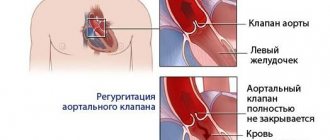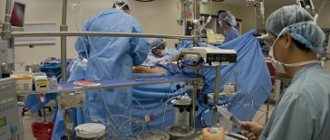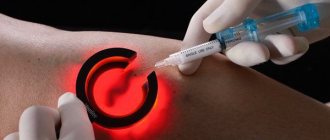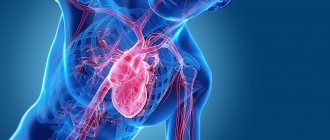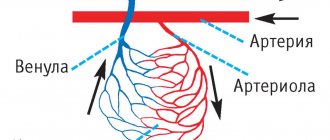Exudative enteropathy with disaccharidase deficiency is associated with congenital or acquired deficiency of enzymes for the hydrolysis (digestion) of disaccharides - lactase, sucrase, trehalase, etc. Disaccharides - milk sugar (lactose), sugar (sucrose), trihalose (mushrooms). In the future, we will look at this condition using the example of intolerance to milk sugar - lactose, which affects up to 30-70% of the world's population. Russian synonyms for this suffering: lactase deficiency, congenital adult lactase deficiency (with delayed onset), hypolactasia, lactose intolerance, lactase malabsorption.
The enzyme lactase is produced in the small intestine. Lactase digests lactose (milk sugar) from milk and dairy products into simple sugars - glucose and galactose, which are absorbed in the small intestine and enter the blood.
Lactose is the main source of energy in the human body and an activator of the nervous system. 5-6% of the population has a congenital deficiency of the lactase enzyme with normal, intact small intestinal mucosa, associated with a congenital gene mutation. Acquired lactase deficiency occurs when the intestinal mucosa is damaged and its synthetic function is impaired, including the production of lactase.
Insulin, thyroid and glucocorticoid hormones, the state of the autonomic nervous system, and nutritional composition have a great influence on the activity of the lactase enzyme in the small intestine.
If there is a lack of lactase enzyme production in the small intestine, lactose (milk sugar) is not digested, passes further through the small intestine and enters the large intestine. There it is exposed to fermentation processes and the action of colon microflora.
And if the cause of lactase deficiency is in the small intestine, then the clinical manifestations of this condition are noted in the colon. With a lack of lactase, unabsorbed milk sugar (lactose) reaches the colon. Under the influence of anaerobic bacteria, it is broken down to form short-chain acids, carbon dioxide, hydrogen and fatty acids. As a result, along the osmotic gradient, water rushes into the lumen of the colon, which leads to the development of osmotic diarrhea and a decrease in the pH of the stool.
Lactase deficiency - causes
The causes of lactase deficiency in adults may be the following:
- inflammatory bowel diseases of bacterial, viral (rotovirus), parasitic (giardiasis) etiology; for example, a rotovirus penetrates the mature cells of the microvilli of the small intestinal mucosa, destroys and rejects them, the mucosal cells cease to form the enzyme lactase, the dysentery bacillus, entering the intestine, produces toxins, causes inflammation throughout the small intestine, multiplies intensively in the ileum and then passes to the large intestine; Giardia lives in the upper small intestine, attaches to the mucosal villi, multiplies, affects the intestinal wall deeper, and disrupts parietal (membrane digestion) by disrupting enzyme production.
- chronic diseases of the stomach, biliary tract, pancreas,
- operations on the gastrointestinal tract,
- endocrine diseases (diabetes mellitus, hyperparathyroidism),
- Whipple's disease is a rare disease of the small intestine;
- gluten enteropathy (celiac disease), with celiac disease the synthesis of all enzymes is disrupted, including lactase, and lactase deficiency occurs, the manifestations of which are significantly reduced by following a gluten-free diet;
- Crohn's disease is a granulomatous enteritis that affects the entire wall of the small intestine in any part of it. Inflammation develops, then scar tissue, and enzyme synthesis stops; damage to the mucous membrane is based on autoimmune mechanisms;
- food allergy - damage to enterocytes (cells of the mucous membrane of the small intestine), it is called allergoenteropathy, which is based on immunoallergic antigen-antibody complexes, the antigen is the food product, and the body produces antibodies; the antigen-antibody complex in cells causes inflammation, the release of neurotransmitters, which leads to damage to enterocytes, and their ability to secrete lactase is impaired;
- bacterial overgrowth in the small intestine;
- lymphoma of the small intestine.
Causes of acidosis and alkalosis
The disease can also develop due to lung disease (for example, bronchial asthma), damage to the nervous system (for example, brain injury), nerve and muscle diseases that lead to loss of the ability to make effective respiratory movements (amyotrophic lateral disease is one such disease). sclerosis).
The opposite condition is called respiratory alkalosis and occurs when the lungs begin to remove carbon dioxide from the body in excess. This occurs due to an increase in the rhythm of breathing and its depth.
Such a respiratory disorder can occur in the presence of pathology on the part of various systems and organs (for example, with lung diseases, tumors and brain injuries, cardiovascular failure).
Metabolic acidosis can develop for the following reasons:
- increasing the production of acids by the body. This can be observed in conditions that are accompanied by metabolic disorders: diabetes mellitus, when cells begin to suffer from impaired glucose use due to a lack of the hormone insulin. (The body produces energy not from glucose, but from fats - this path is an alternative. When fats are broken down in the liver, many ketone acids are formed, which provoke the appearance of acidosis).
- impaired renal function. The kidneys play an important role in the process of regulating the acid-base balance in the blood. If a patient has kidney diseases that can lead to disruption of their functions, the processes of absorption of substances with an alkaline reaction and the processes of acid secretion may also be disrupted. This may cause acidosis.
- loss of a large amount of alkalis along with digestive juices. This condition can be observed in the case of various operations on the intestines, with severe diarrhea.
- poisoning by toxic substances, poisons. These substances can be broken down in the body, producing excessive amounts of acids. This can cause acidosis.
The main causes of metabolic alkalosis are the following:
- use of diuretics (diuretics);
- loss of acidic gastric contents in large quantities: this occurs when aspiration of stomach contents through a special probe, with profuse vomiting;
- excessive excretion of hydrogen ions by the kidneys. This can occur when the body has an excess of aldosterone, an adrenal hormone that takes part in the regulation of water and electrolyte balance. Its level can increase both in diseases of the adrenal glands and in pathologies of other organs (for example, in heart failure).
That is, the development of alkalosis or acidosis is most often caused by the occurrence of pathological processes in the patient’s body, during which the acid-base balance changes, and the compensatory capabilities of the body are insufficient.
Lactase deficiency - symptoms
The severity of clinical manifestations depends on the degree of lactase deficiency, the amount of milk and dairy products, and the severity of the disease, which is recognized as the cause of lactase deficiency. Thus, when consuming more than 200 ml of milk and dairy products, only 5% of people experience pronounced manifestations of intolerance, 10-12% have clinical manifestations only when consuming whole milk, 60-70% of the population suffer from varying degrees of lactase deficiency, 5-10 % can consume milk up to 200 ml and unlimited fermented milk products.
With significant enzymatic deficiency of lactase, approximately 1 to 2 hours after consuming milk or dairy products, a person may develop a complete picture of lactase deficiency:
- heaviness, bloating, rumbling in the stomach, caused by the breakdown of lactose in the colon and the formation of carbon dioxide and hydrogen;
- pain of a bursting nature, due to increased gas formation and distension of the colon and irritation of pain receptors;
- loose frequent stools - copious, watery, light yellow with a sour odor due to the formation of fatty acids, increased osmotic pressure and the attraction of water into the colon;
- nausea, single vomiting.
In addition to intestinal manifestations, general weakness, rapid heartbeat, sweating, and headache may occur.
Reflux symptoms
Most often, reflux causes a number of unpleasant stomach problems:
- belching;
- heartburn;
- burning in the esophagus;
- bitter or sour taste in the mouth;
- nausea;
- vomit;
- difficulty swallowing.
These are common symptoms of reflux. However, sometimes it happens that the troubling ailments are not related to the digestive tract. Acidity regression can cause:
- recurrent bronchitis;
- a tiresome cough caused by food particles in the windpipe;
- aspiration pneumonia;
- hoarseness;
- change in voice timbre;
- sinusitis;
- sleep apnea.
A person with acid reflux may also have symptoms that resemble coronary artery disease and a heart attack, such as a severe burning sensation in the chest and shortness of breath.
If left untreated, acid reflux can lead to Barrett's esophagus syndrome; complications of this syndrome can lead to cancer.
Diagnosis of lactase deficiency
Diagnosis of lactase deficiency largely depends on the anamnestic data of a person who has had poor tolerance to whole milk throughout his life, and the exclusion of chronic diseases of the gastrointestinal tract, food allergies, chronic enteritis and other causes of the disease.
The following laboratory data should be noted:
- A genetic blood test, gene determination (LCT, LPA) helps to identify lactose intolerance and predict the development of lactase deficiency in children over 1.5 years of age.
- The oldest scatological analysis of stool has not lost its significance, by which it is possible to identify disturbances in the absorption of carbohydrates (sugars): increased starch, fiber, iodophilic flora, decreased stool acidity less than 5.5, determine carbohydrates in stool.
- Glycemic load test with lactose - a test of lactose tolerance. The blood glucose level is determined on an empty stomach and 15, 30 and 60 minutes after a lactose load of no more than 50 g. If the lactase enzyme is insufficient, within 60 minutes after taking lactose, the blood glucose level increases by less than 1.1 mmol/l, i.e. , no more than 20% of the initial level - a flat glycemic curve. The most accurate research method.
- Hydrogen breath test - an increase in the concentration of hydrogen in exhaled air due to bacterial breakdown of disaccharides in the colon. The study is carried out on an empty stomach after a 14-hour fast. Preparation for the study: the patient follows a diet that excludes slowly digested foods (legumes, bran and carbonated drinks). Immediately before and during the examination, smoking and chewing gum are not allowed, and physical activity is limited 2 hours before the examination. Before the first intake of exhaled air, oral hygiene is carried out - teeth brushing. Then the patient is given 50 g of lactose and the hydrogen concentration in the exhaled air is determined every 15 minutes, if the hydrogen concentration is >20 ppm - a criterion for lactase deficiency. In 20% of cases the result is false positive.
- A biopsy of the small intestinal mucosa, revealing a decrease in lactase activity, is the “gold standard”, but is rarely performed.
Differential diagnosis must be carried out with food allergies, pseudoallergic food intolerance, chronic enteritis and other causes of lactase enzyme deficiency.
Diagnostics
The diagnosis of lactic acidosis is established only after laboratory confirmation. The characteristic content of lactic acid is 2 mmol/l and above, normally 0.4-1.4 mmol/l. Due to the complexity of the symptoms and the rapid deterioration of the condition, studies are carried out in the intensive care unit.
| Sign | Diabetic ketoacidosis | Hyperglycemic state | Lactic acidosis |
| Smell of acetone | Yes | No | No |
| Acetone in urine | Yes | No | No |
| Pupils | Narrowed | Norm | Norm |
| Glycemia | Hyperglycemia | Sharply expressed | Small |
| Body temperature | Demoted | Normal/often elevated | Normal |
| General blood analysis | Leukocytosis, increased ESR | Blood thickening and ESR | Leukocytosis, ESR increased |
| General urine analysis | Proteinuria, cylindruria and microhematuria | Proteinuria, cylindruria | Ordinary |
| Blood potassium content | Reduced | Reduced | Norm or excess |
Treatment of lactase deficiency. Food selection
Treatment consists of eliminating whole milk and dairy products from the diet. Currently, products with a reduced lactose content are produced and labeled “hyla”; products manufactured by Valio, Parmalat, and President are treated with lactase and labeled with the “laktoosition” symbol, most often for children.
Elimination diets (test consumption of individual foods containing milk sugar) are of great importance in both diagnosis and treatment.
If taking any dairy product - whole milk, fermented milk products, cottage cheese, cheese, coffee with cream, butter, etc. causes clinical manifestations of intolerance, if treatment is not effective, and clinical signs disappear without treatment, then we can talk about dairy intolerance sugar, the product should be excluded.
In products that have undergone lactic acid fermentation, when milk sugar turns into lactic acid, there is little lactose and therefore the use of fermented milk products in nutrition is possible (yogurt, fermented baked milk).
Products with live lactobacilli can be well tolerated, which can be done by preparing a live fermented milk product at home using starter cultures - Narine or Evitalia.
The amount of lactose in a dairy product is inversely proportional to its fat content, so there is practically no lactose in butter, and heavy and half-fat cream contains less lactose than whole milk.
When making some hard cheeses (cheddar, Parmesan, Swiss), the whey, where lactose is concentrated, is separated. Therefore, lactose-poor cheeses are suitable for consumption by lactose intolerant people. But homemade cheese and soft cheeses are rich in lactose.
Products containing lactose should be divided into several doses throughout the day.
Lactose-free products include fruits, vegetables and their juices, cereals, honey, butter, rice, vermicelli, meat, fish, poultry, chicken eggs, salt, nuts.
Reflux disease of the stomach - how to prevent it?
If your reflux symptoms are not intermittent but regular, you need to take action. It's worth taking a look at your lifestyle. Eating a healthy diet can increase your chances of developing acid reflux.
What dietary rules should you follow to effectively prevent acid reflux?
- limit consumption of sweet and fatty foods;
- limit the consumption of alcohol, cola and tea;
- avoid citrus and spicy spices;
- eat lean poultry and boiled vegetables;
- The last meal (not too large) at least 3 hours before bedtime.
Sleeping on a high pillow, avoiding tight clothing and belts, and quitting smoking may also help.
Hidden lactase
ATTENTION!
To improve the structure, taste and other properties, lactose is often used in the manufacture of food products. It is “hidden” in dry milk formulas, bread, frozen vegetables, canned soups, dressings and sauces, spaghetti, sausage, jam, sweets, instant foods, fast food, ketchup, mayonnaise, chocolate (except bitter). Read the product ingredients!
Milk sugar (lactose) is an auxiliary component of many drugs, for example, Ganaton, Gastal, Motilium, Cerucal, Imodium, Karsil, Linex, No-shpa, Kvamatela, Dulcolax, Gelusil, Galstena, Wobenzym, Mexidol, Corvalol, Warfarin, Bilobil, Panzinorm -forte, Omeza, and other drugs. Read the annotations for medications! Considering that lactase deficiency is based on a deficiency of the small intestinal enzyme - lactase, there are currently drugs that perform a replacement function for the lack of this enzyme. Dietary supplements Lactase, Lactazar can be taken 1 capsule along with a dairy product and help digest milk sugar, Tylactase taken 1 capsule with food or 2 capsules added per 1 liter of milk, store in the refrigerator, Lactrase 1-2 capsules before taking dairy products.
Forecast. If lactase deficiency is congenital, elimination diets are beneficial. In acquired variants of lactase deficiency, the course of the underlying disease that caused this type of enteropathy is important.
How is acid reflux diagnosed?
To diagnose the disease, an FGDS examination is prescribed; if necessary, a tissue biopsy is taken from the surface of the esophagus for further examination in the laboratory. Based on the symptoms, the doctor will be able to make a diagnosis. To confirm, a general practitioner, family doctor or gastroenterologist may prescribe the following:
- antireflux therapy, i.e. taking oral medications and proper diet. If the symptoms disappear, it will be known that the diagnosis is correct;
- specialized tests - usually a gastroscopy, sometimes an x-ray and a pH test of the esophagus.

